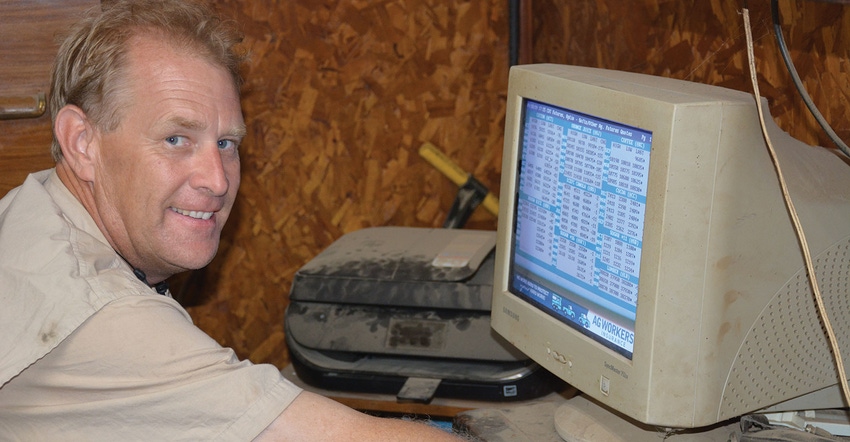
No-till and rotation play crucial roles in Jason Luckey’s commitment to improving soil on the diversified farm he manages with his brother, Ken, and nephew, Zac.
Jason concentrates on cotton. Ken and Zac mind the corn, wheat, soybean and cattle operations near Humboldt, Tenn.
“I like rotation in combination with no-till,” Jason says. “Cotton leaves so little residue on the soil, so little protection. I like to bring in corn and wheat to build the ground back and add organic matter.”
He says he might plant cotton behind cotton “for three years, at the most. Then, I’ll being in some grain for a few years. I can tell the difference when I rotate and build the soil.”
He says wheat behind cotton and corn behind cotton do well. He may incorporate lime, if needed, in wheat. “If not, I may take that land to corn.”
He has a long history with no-till, “since the advent of Roundup Ready in the early 1980s. I remember attending a lot of no-till meetings with John Bradley (University of Tennessee agronomist at the time) in 1984.
“We had a hard fight until Roundup Ready and then we could manage weeds.”
The challenge has changed in recent years. “Pigweed is now one of our biggest challenges,” Jason says. “Dicamba is working.”
He says they are using XtendFlex cotton varieties and Xtend soybeans.
“Next year, I’ll look at some residual herbicides. I’ve been a little lax with those in years past, afraid they would burn the crop.
“I’ve dipped my toe in using residual over the top for pigweed control,” he says. “I want to get residuals better incorporated into my weed control program.”
He’s looking for products that will not burn the crop.
He’s also considered planting cover crops but has not so far. “I almost did,” he says. “But I missed the deadline to get assistance. I needed to get some other work done on fertility issues the following spring, anyway, so it worked out. But I’m thinking that a cover crop could be feasible.”
Back in late September, Luckey was anticipating a good cotton crop, looking for one last rain to help defoliation, but not expecting more moisture to affect yield appreciably.
Market options
He was also thinking about selling the crop.
He markets most of his cotton, about two-thirds, with Staplecotton Cooperative. “I keep one-third to play with on my own,” he says. I’ll probably have about 1,200 bales to market. I’ll have 25 percent hedged.”
He says some folks might wonder why he doesn’t market everything through the co-op.
“Marketing some of it myself keeps me more engaged in the market,” he says. “I am not disappointed in Staplcotn results. They do a good job. I just like to do some of it on my own.”
He says in a down market, the co-op usually beats him. “They do a good job for me.”
He hopes the cotton produces as well as corn, which was “one of our best crops ever. One field averaged 230 bushels per acre and the worst was 179. That’s all dryland corn.”
They need good production with prices off and some early season setbacks. Also, rainfall that started last fall and persisted into planting season and off and on until August caused some delays and missed planting windows. “We only planted 750 acres of wheat last fall,” Jason says. “We usually plant 1,100 to 1,200. We also did not get the wheat harvested until July 1 because of rain.”
The ample rainfall may have caused a bit more stress than usual at planting time but also pushed yield.
“We have been blessed,” Jason says. “We’ve had good rainfall, one of the overall best corn crops ever.”
He’s anticipating good cotton yields as well.
In late October, he offers an update on cotton harvest.
“It has been really good. I am very pleased at this point — fabulous yields and grades. The picker has been giving me some trouble and only acts up late in the day. That’s aggravating, but maybe we’ll eventually figure it out.” He thinks the issue could be electrical. “Electrical can be difficult,” he says.
About the Author(s)
You May Also Like






